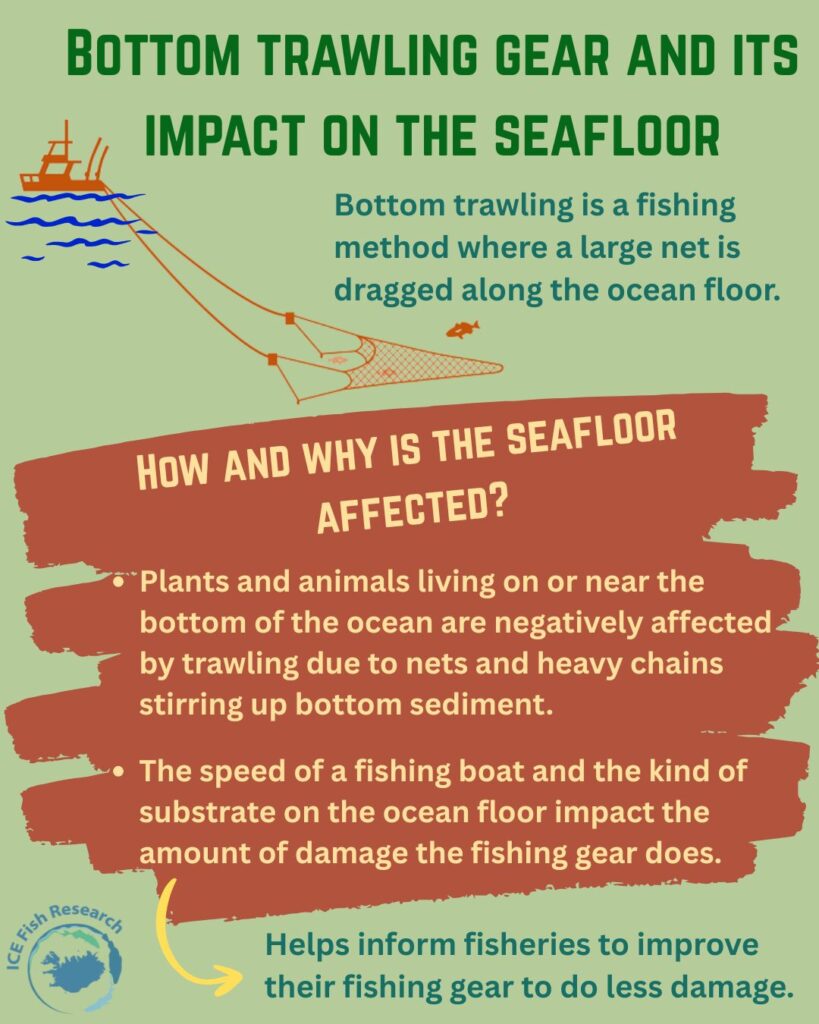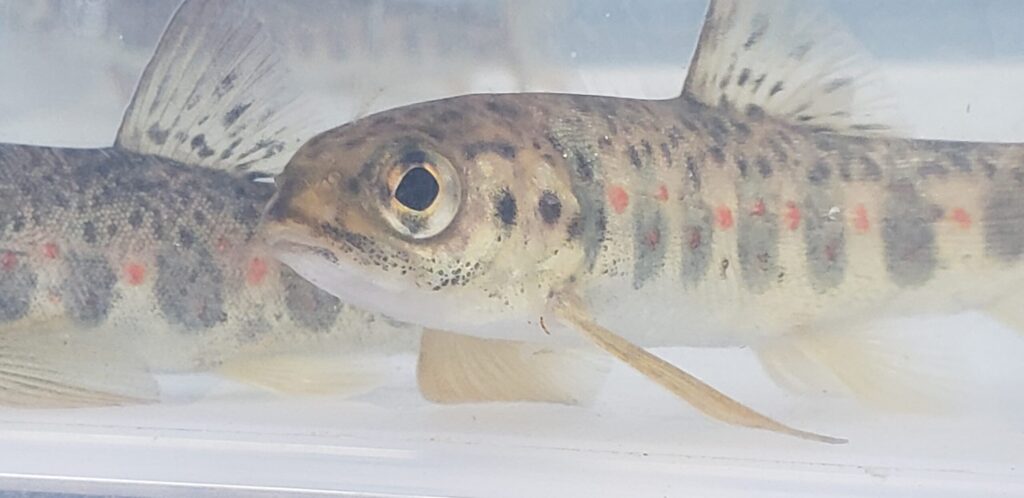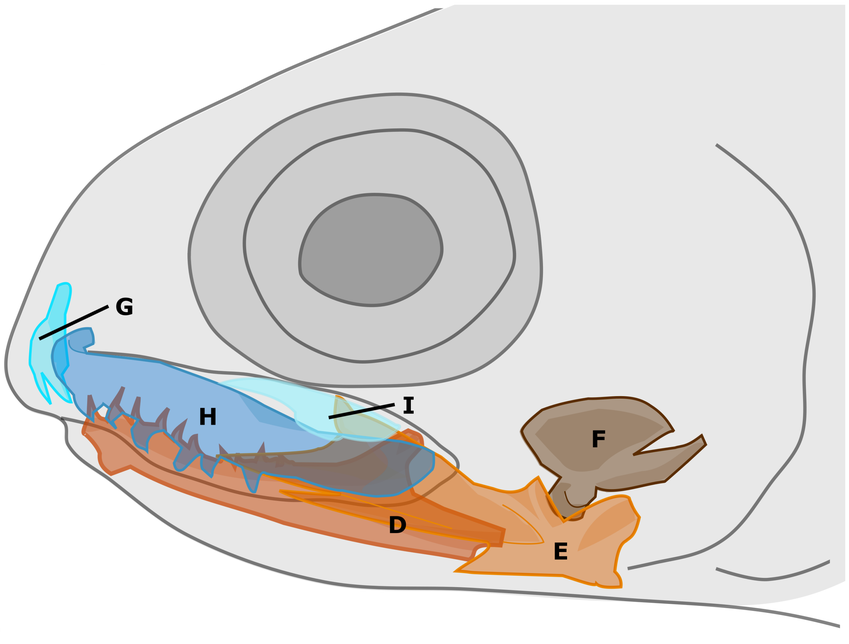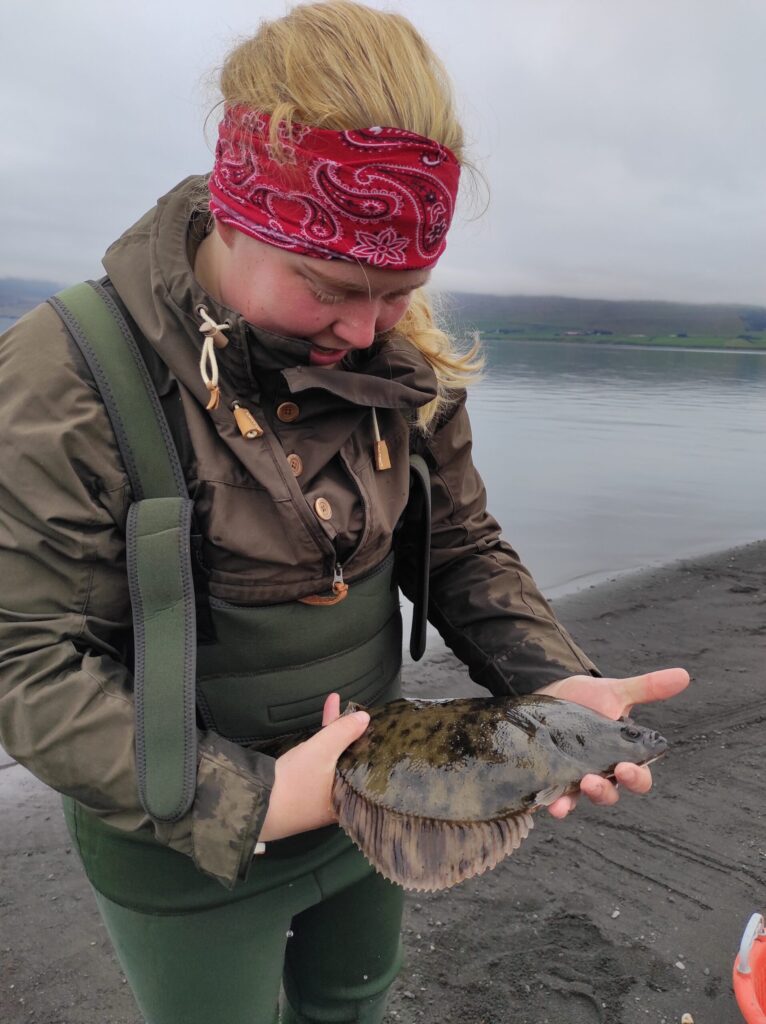Bottom trawling is harmful to life on the ocean floor. Many people agree with this. But we still need to learn more about how and why it causes damage.
Mason Kenny wanted to better understand the impact of bottom trawling gear on the seafloor. During his Master’s in Environmental and Natural Resources at The University of Iceland he dived into this.
He worked together with the Marine and Freshwater Research Institute (Hafró). There he got help from Pamela Woods, Haraldur Einarsson, and Sveinn Agnarsson. They gave the opportunity to participate in the Optigear project. Through this project he got to investigate the interaction between fishing gear and the seafloor.
What is bottom trawling?
Bottom trawling is a fishing method where large nets, held open by heavy metal doors and weighted with chains, are dragged directly across the seafloor to catch bottom-dwelling fish (see figure below).
Studies have shown that this fishing practice has a major negative effect on plants and animals living near and on the bottom of the ocean. Bottom trawling stirs up sediment (solid material at the bottom of the ocean) by dragging big nets and heavy chains along the bottom and destroys the natural seafloor habitat. For example, it tears up plant roots and collapses animal burrows (tunnel or holes that animals dig to hide in). Sediment will start floating in the water which will block light from the plants on the ocean floor which is needed for them to grow.
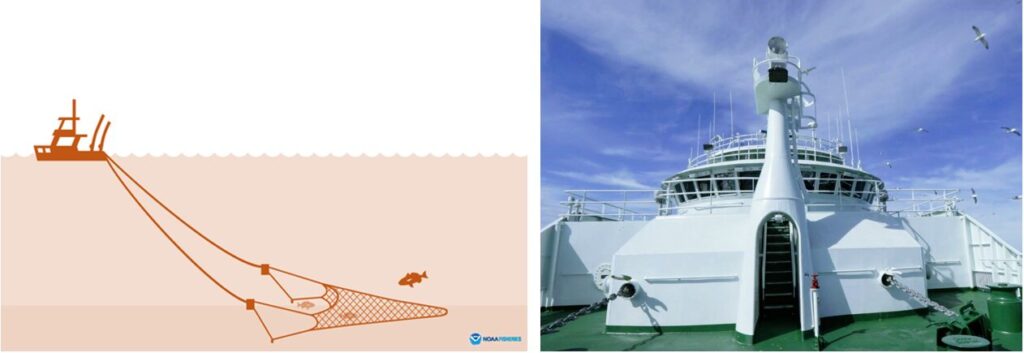
Impact on the seafloor depended on ship’s speed and sediment type
Mason focussed on real-world vessel specific trawling data. This data included, for example, the distance between the bottom trawling net and the sea floor. As well as the tension on the wires that connect the net to the boat. This can give information on how the gear interacts with the seafloor and how the bottom substrate affects bottom trawling.
First, he mapped and classified the sediment on the ocean floor. He did this using grab samples, which is a sample of sediment at a specific location. He categorised the sediment classes into average grain sizes. Then he built a new substrate map for the Icelandic waters (see below). This is helpful for future research to be more precise when looking into the interactions of the trawling gear with the seafloor.

He then looked at how different aspects of bottom trawling affected the gear and how that impacts the seafloor. He found that the speed of the fishing boat has an impact on tension imbalance of the trawling net. This imbalance will have a negative impact on the seafloor. His findings showed that a speed below 4.6 km/h resulted in the highest instability, while at a speed above 6.4 km/h it stabilised. So, a slower boat does more damage.
He also found that the kind of substrate on the seafloor affected the imbalance. Coarser substrate (bigger than 10 mm) decreased the imbalance by 22%. This is because these types of sediment give greater resistance to the net and make the gear more stable.
Bottom trawling has more impact than we expected
Mason’s results also show that bottom trawling can be a hidden driver of ocean carbon release that is stored in seafloor sediment. Our oceans are the largest natural carbon sink on the planet, absorbing and storing more carbon than any other system on Earth. As mentioned before, the dragging of heavy nets, doors, and chains along the seabed stirs up the sediments which will start floating in the water. With this sediment the carbon gets released as well. And as you might know, carbon release is a major driver of climate change. This figure below shows how bottom trawling disturbs the seafloor and releases carbon (CO2) into the ocean:
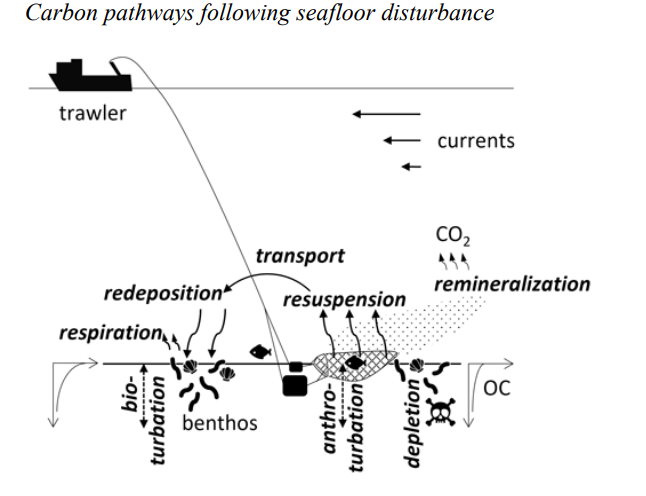
This research is important as it can help to inform fisheries on how to improve their gear design, so unnecessary seabed damage can be avoided. Bottom trawling is one of the most widespread human disturbances on the seafloor but there is not a lot of research that have put this disturbance into numbers. This study is a first step to show fisheries and policy makers how we can begin to lessen trawling’s impact.
Looking into the future
This research was a big undertaking but there is so much more that can be done. Mason looked into data from a certain type of ship, so this work can be widened to other types of ships and their gear to see how they impact the seafloor. Furthermore, to really see how the fish are impacted this study can be synchronised with Afladagbók catch logs that can link the bottom trawling gear with biological outcomes.
This study that Mason Kenny set out to do is part of a bigger project, the Optigear project. This project sets out to increase efficiency in trawling fisheries. It is a project funded under European Union’s Horizon 2020 research and innovation programme MarineGuardian (Grant agreement ID: 101212608).
